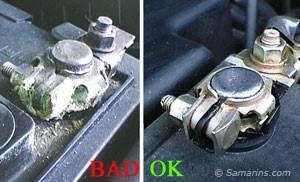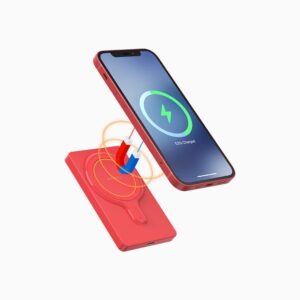Looking to charge a lead acid battery? You’ve come to the right place! We understand that learning the ins and outs of battery charging can be a bit overwhelming, but fear not. In this article, we will guide you through the process step by step, making it easy to understand and implement. Whether you’re a beginner or have some experience, our conversational approach will ensure you grasp the concept of how to charge a lead acid battery effectively. So, let’s dive in and get started on this electrifying journey!
How to Charge a Lead Acid Battery
Introduction
In this article, we will explore the process of charging a lead acid battery. Lead acid batteries are commonly used in a variety of applications such as automotive, marine, and backup power systems. They are known for their reliability, long lifespan, and affordability. To ensure optimal performance and extend the battery’s life, it is crucial to charge it correctly. We will discuss the steps involved in charging a lead acid battery, along with important considerations and tips to follow.
Determining the Battery Type
Before delving into the charging process, it is essential to determine the type of lead acid battery you are dealing with. There are two main types:
Flooded Lead Acid Batteries
Flooded lead acid batteries, also known as wet cell batteries, contain a liquid electrolyte solution. These batteries require periodic maintenance, such as checking and refilling the electrolyte level.
Sealed Lead Acid Batteries
Sealed lead acid batteries, also called valve-regulated lead acid (VRLA) batteries, are maintenance-free due to their sealed design. They do not require electrolyte level checks or refills. VRLA batteries come in two subtypes: absorbed glass mat (AGM) and gel batteries.
Charging a Lead Acid Battery
Now that you know the type of lead acid battery you have, let’s explore the process of charging it. Charging a lead acid battery involves the following steps:
1. Safety Precautions
Before you start charging the battery, it is crucial to follow these safety precautions:
- Ensure you are in a well-ventilated area to avoid the buildup of potentially hazardous gases.
- Wear protective gloves and eyewear to protect against any corrosive materials.
- Keep flames, sparks, and cigarettes away from the battery to prevent explosions.
2. Choosing a Charger
Next, you need to select an appropriate charger for your lead acid battery. Consider the following factors:
- Voltage: Ensure that the charger’s output voltage matches the battery’s nominal voltage (e.g., 12V, 6V).
- Charging Current: The charger’s current output should be compatible with the battery’s specifications. Avoid using high amperage chargers, as they can damage the battery.
- Automatic vs. Manual: Automatic chargers are convenient as they automatically adjust the charging current based on the battery’s needs. Manual chargers require monitoring and adjustment of the charging process.
3. Preparing the Battery
Before connecting the battery to the charger, it is essential to prepare it properly:
- Inspect the battery for any signs of damage or corrosion. If damaged, it is recommended to replace the battery.
- Clean the battery terminals and connections using a mixture of baking soda and water to remove any corrosion.
- Ensure the battery is in a well-ventilated area.
4. Connecting the Charger
To connect the charger to the lead acid battery, follow these steps:
- Identify the polarity of the battery terminals (positive and negative).
- Connect the charger’s red clamp to the positive terminal of the battery.
- Connect the charger’s black clamp to the negative terminal of the battery.
5. Charging Process
Once the charger is properly connected to the battery, you can initiate the charging process:
- Refer to the charger’s manual for specific instructions on the charging process.
- Set the charger to the appropriate charging mode (e.g., regular charge, maintenance/float charge).
- Monitor the charging process periodically to ensure everything is functioning correctly.
- Allow the battery to charge fully before disconnecting it from the charger.
6. Disconnecting the Charger
When the lead acid battery is fully charged, follow these steps to disconnect the charger:
- Turn off and unplug the charger from the power source.
- Remove the charger’s black clamp from the battery’s negative terminal.
- Remove the charger’s red clamp from the battery’s positive terminal.
Tips for Charging Lead Acid Batteries
To optimize the charging process and prolong the battery’s life, consider the following tips:
1. Charge in a Well-Ventilated Area
Ensure that the charging process takes place in a well-ventilated area to prevent the accumulation of potentially explosive gases.
2. Avoid Overcharging
Continuously monitor the charging process and avoid overcharging the battery. Overcharging can lead to gassing, electrolyte loss, and reduced battery life.
3. Use the Right Charger
Always use a charger specifically designed for lead acid batteries. Using the wrong charger can damage the battery and pose safety risks.
4. Follow Manufacturer’s Recommendations
Refer to the battery manufacturer’s recommendations and instructions for charging procedures. Different battery models may have specific requirements.
5. Maintain Proper Electrolyte Levels (Flooded Batteries)
If you own a flooded lead acid battery, regularly check and maintain the proper electrolyte levels to ensure optimal performance.
6. Avoid Deep Discharges
Regularly charge your lead acid battery before it reaches a critically low state of charge. Deep discharges can affect the battery’s capacity and overall lifespan.
Charging a lead acid battery correctly is crucial to ensuring its optimal performance and longevity. By following the steps outlined in this article, you can safely and effectively charge your lead acid battery. Remember to prioritize safety, choose the right charger, and follow recommended guidelines. With proper charging and maintenance, your lead acid battery will continue to serve you reliably for years to come.
Frequently Asked Questions
How long does it take to charge a lead acid battery?
The charging time for a lead acid battery can vary depending on its capacity and the charging current. Typically, it takes around 8-16 hours to fully charge a lead acid battery, but this can be longer for larger batteries or if the battery is deeply discharged.
What is the recommended charging voltage for a lead acid battery?
The recommended charging voltage for a lead acid battery is around 2.3 to 2.4 volts per cell, or about 13.8 to 14.4 volts for a 12-volt battery. It’s important to avoid overcharging the battery as it can lead to electrolyte loss and damage to the battery.
Can I use a regular car battery charger to charge a lead acid battery?
Yes, you can use a regular car battery charger to charge a lead acid battery. However, it’s essential to ensure that the charger has a suitable charging voltage and current for the battery. Slow charging is typically recommended to avoid overheating and prolong the battery’s lifespan.
Should I disconnect the lead acid battery from the vehicle before charging?
In most cases, it is not necessary to disconnect the lead acid battery from the vehicle before charging. However, it is important to ensure that the ignition is turned off, and any electrical accessories are not drawing power during the charging process. It’s also a good safety practice to wear gloves and safety glasses when handling the battery.
Can I charge a lead acid battery indoors?
Yes, you can charge a lead acid battery indoors, but it’s important to ensure proper ventilation. Lead acid batteries can release hydrogen gas during the charging process, which is highly flammable. Therefore, it is recommended to charge the battery in a well-ventilated area to avoid the risk of explosion.
Final Thoughts
Charging a lead acid battery is a straightforward process that requires careful attention to ensure proper charging and optimal battery performance. To charge a lead acid battery, start by connecting the battery to a charger that matches its voltage and capacity. Make sure the charger is in a well-ventilated area and follow the manufacturer’s instructions for charging. Monitor the charging process regularly and adjust the charger settings if necessary. Once the battery is fully charged, disconnect it from the charger and store it in a cool, dry place. Following these steps will help you effectively charge a lead acid battery.



